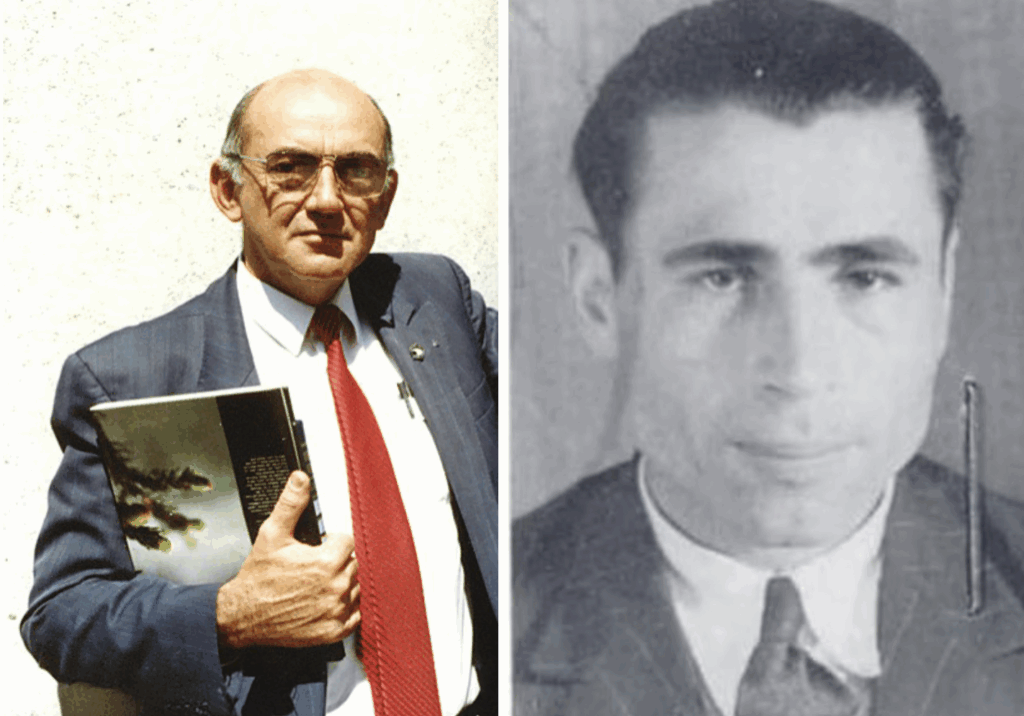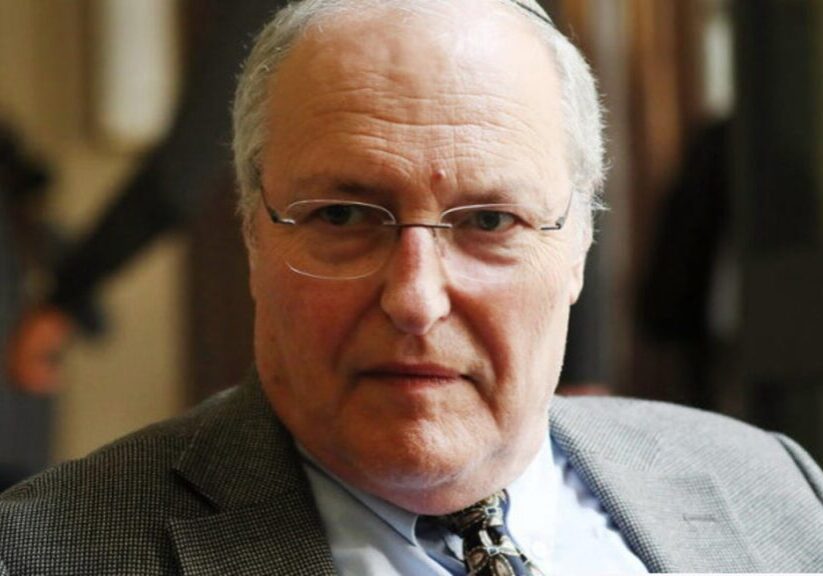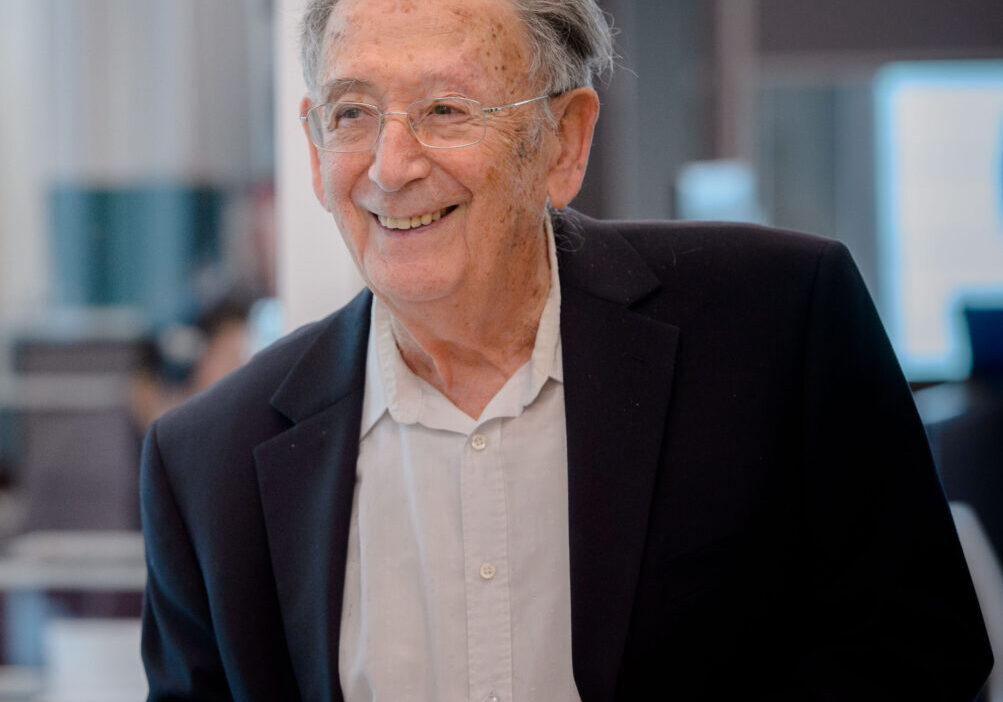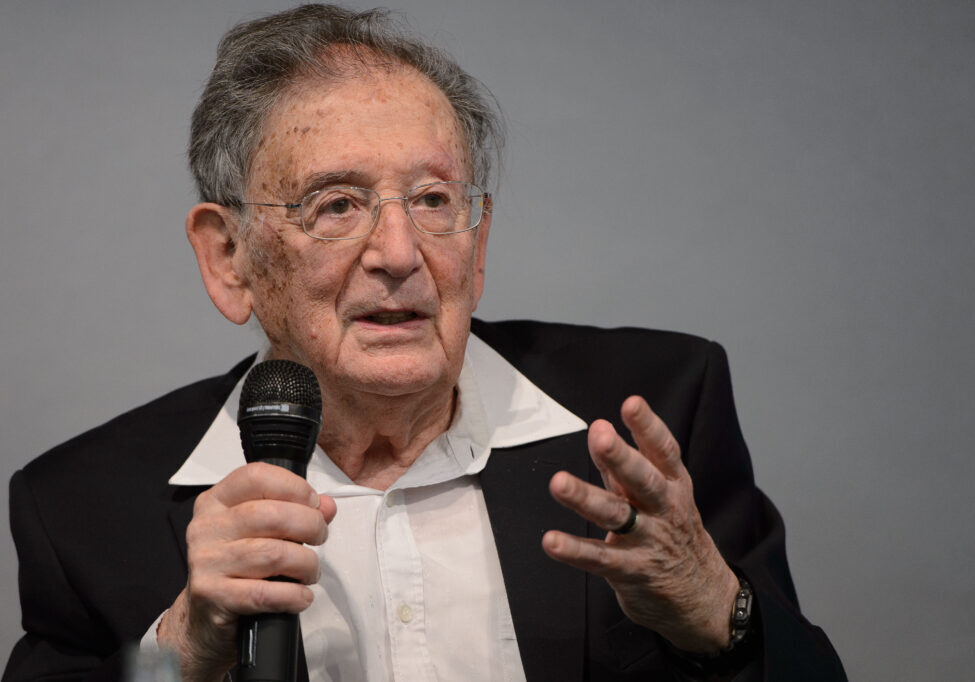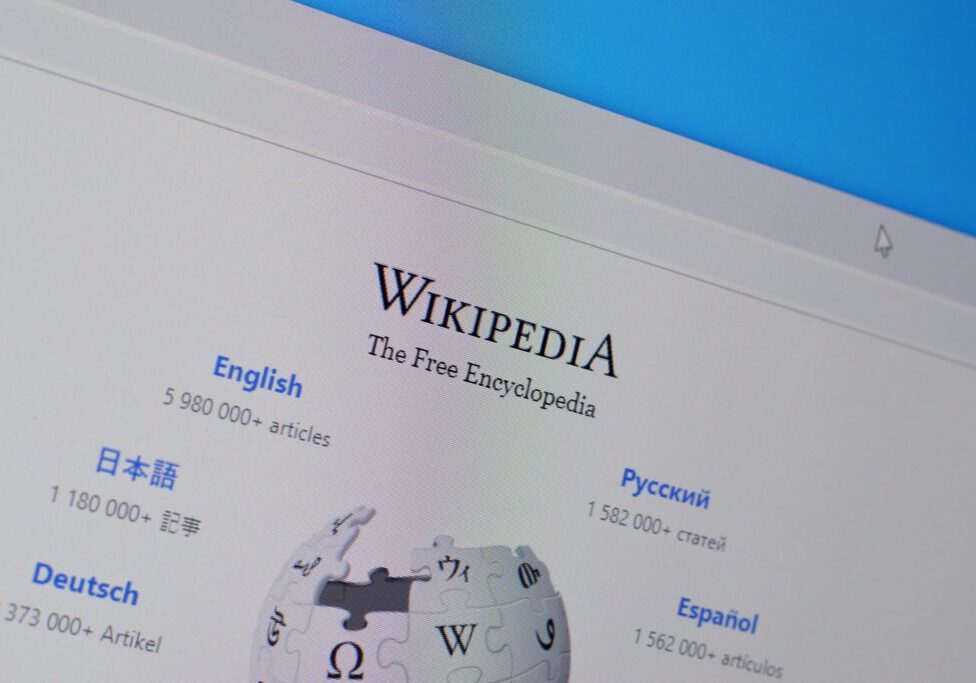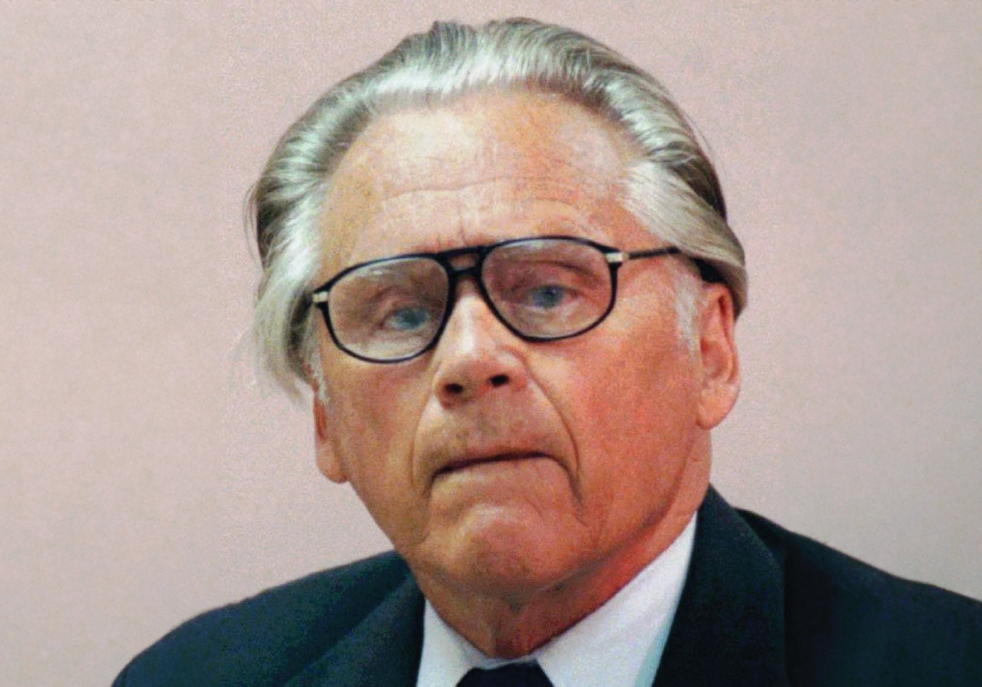Australia/Israel Review
Essay: Evil without Banality
Nov 26, 2014 | Saul Austerlitz
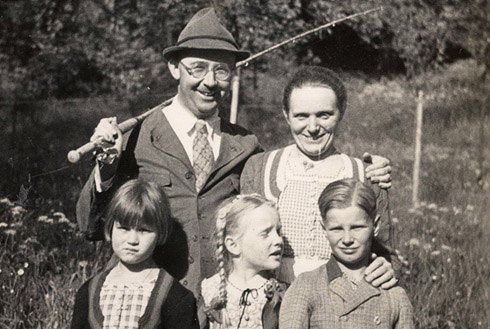
The newly discovered letters of Himmler and Eichmann
Saul Austerlitz
In 2006, a prominent Israeli psychiatrist named Dr. Nathaniel Laor received a telephone call from American real estate mogul and philanthropist Leon Charney. Laor, a professor at both Tel Aviv University and at Yale’s Child Study Centre, was told that a friend of Charney’s knew a man who had come into possession of a remarkable trove of papers. Would he care to look them over and assess their historical value?
Soon Laor visited Chaim Rosenthal’s apartment in the leafy Ramat Aviv neighbourhood of Tel Aviv, where a battered suitcase lay on the floor under the bed. He opened the suitcase and discovered hundreds of letters written by Heinrich Himmler, Reichsfuhrer of the SS and Nazi Minister of the Interior, to his wife Marga and his daughter Gudrun, and their letters to him. There were also family photographs, diaries, and notebooks detailing familial expenses. A near-complete record of the personal life of one of the most infamous Nazi war criminals had been in the State of Israel, unbeknownst to anyone, for decades.
“To come into a three-room apartment in Tel Aviv to find an old suitcase containing these pictures of the architect of the Holocaust and his family, with his steady type of calculations, his diaries, his letters, for me it was a shock,” said Laor, the descendant of Holocaust survivors. Laor skimmed through the documents and knew that he had found something remarkable that needed to be shared with the general public.
After visiting Rosenthal’s apartment, Laor called Vanessa Lapa, a Belgian-Israeli television producer, who he had met when she had worked for Israel’s Channel 1 and Channel 10 news. By the time Laor and Lapa encountered Rosenthal, he was a broken man, his spirit worn down by the perverse responsibility of the Himmler papers.Rosenthal had reached out on numerous occasions to German newspapers in the past in the hopes of piquing their interest in his cache but had been unable to attract their attention. “[Rosenthal] knew the enormity of the find, and somehow he couldn’t get the attention of the world,” said Laor. “Something with these documents was bothering [him], it was like a bone stuck in his throat. He needed to clear his house.”
Now Rosenthal, in his late sixties, wanted to sell the papers – not to make a profit, but simply to pass the burden on to someone else. Above all, Rosenthal was worried that the papers would fall into the wrong hands, winding up in a neo-Nazi flea market somewhere, or worse, in the hands of Holocaust denialists who might somehow use these domestic letters as proof of Himmler’s innocence. Lapa’s father wound up purchasing the letters for his daughter’s production company, Realworks, for a relatively nominal sum.
Lapa was tantalised by a single question: How had Rosenthal acquired Himmler’s personal correspondence? Lapa spent the first year digging for answers about the letters’ provenance. The papers had been, at war’s end, at the Himmlers’ home in Gmund-am-Tegernsee in Bavaria. Marga Himmler had been questioned by American forces in September 1945 and had testified that all of her husband’s papers were in the safe.
Where had they stopped along the path from Gmund to Tel Aviv, and who had held them along the way? Rosenthal, who had been a painter and a cultural-affairs officer for the State of Israel, had told different stories at different times about how he had acquired the Himmler papers. He had originally stated that he purchased the papers at a flea market in Brussels in the 1960s. In a 1982 New York Times article, Rosenthal claimed to have purchased 700 letters and two diaries for US$40,000 from a former Nazi officer living in Mexico.
Rosenthal had also served as a cultural attaché in the United States in the 1980s and had possibly acquired them at a flea market in Los Angeles during his term of service. Or he had borrowed the letters and diaries from a couple at the Mexican-American border. Rosenthal was now too frail to remember, or had jumbled up the contradictory stories he had told in the past about the letters. Having hit a dead end, Lapa decided to regroup and look to the contents of the letters. “Only then, I realised that maybe there is a bigger story or a more interesting story,” said Lapa.
The Himmler papers were the private record of an eminently public man, his musings on his horrific work, and the mundane details of his family life, echoing his pronouncements as one of the highest-ranking officials of the Nazi Party. Their discovery would be part of a larger process of finding or revisiting the private words of prominent Nazis, separating out the fictions they peddled in public from their personal beliefs. For while Lapa and Laor were sorting through their find, a German philosopher was visiting archives around Germany, painstakingly assembling the complete text of a series of conversations, held after the war in Argentina, that she believed might help her understand the mental world of none other than Adolf Eichmann. The two discoveries would ultimately offer, as we see in two recent artistic works, a perspective on high-ranking Nazis – and the way they thought of themselves and their work – unavailable from any other source.
Himmler’s letters and Eichmann’s transcripts offer a privileged view inside the personal lives and thoughts of Nazi leaders otherwise intent on maintaining an unflinching public pose, allowing us to glimpse not only their actions, but also their motivations.
The Decent One, the film Lapa ultimately made, is an epistolary documentary, drawn entirely from the Himmler family’s letters and diaries. It begins when Himmler was still a child, enthusing about a visit to see a Passion Play, but picks up steam shortly after his graduation from university, when Himmler joined the Nazi Party and began corresponding regularly with Marga Boden, a clinic owner seven years older than him. Their tone is initially playful – he suggests a ceremonial pact in which she must exercise twice daily and cook him soup – but even during these early years with Hitler, he bristles at any questioning of his devotion to the Nazi cause.
“Why are you going to a Hitler rally,” Marga wonders in one of her letters which are read in voice-over by actors in The Decent One, “when you know what he will say?” Himmler frostily responds, “I must go to Hitler’s rallies, because I organise them and am jointly responsible for them.”
The pre-war letters (the precise Himmler numbered his correspondence) are the missives of a travelling salesman, constantly on the road, and checking in on his family back at home, with the only notable distinction being that the product Heinrich Himmler was selling was Nazism.
Himmler’s daughter Gudrun was born in 1929, and the most haunting story told by the family’s correspondence is the record of the cosy relationship between a murderous father and his admiring daughter. On the occasion of Gudrun’s first birthday, Himmler draws the outline of her hand into the “bang journal” he and Marga kept about Gudrun’s development. Marga writes to her husband about how a worried Gudrun had asked her whether “Uncle Hitler” will ever die. Their humdrum domestic life stands in marked contrast to Himmler’s bloodthirsty brutality elsewhere.
Current events become familial triumphs. Shortly after the Austrian Anschluss, Gudrun was still thrilled by her father’s Viennese trip: “At this time yesterday, Daddy went in!” Himmler’s rigid sense of Nazi morality affects his domestic life. He tells Marga that a “healthy marriage” requires at least four children. The Himmlers wound up adopting a boy named Gerhard, whose unruly behaviour presumably prompted some of Heinrich’s disquisitions on the need for order in his letters: “Order creates the nation, the culture, and order creates the state.” Later, Heinrich cruelly suggests to Marga that she should not sign her letters to Gerhard “Mother”, but could resume doing so if his behaviour improved. (Gerhard was eventually sent to join the SS at the age of 15 after being caught smoking a cigarette, and became the youngest German prisoner of war in the Soviet Union before being released in 1955, 10 years after the end of World War II.)
On first impression, Himmler seems a doting father, at least to Gudrun, but Lapa and her co-writer Ori Weisbrod soon found jarring notes intervening. Gudrun was invited to tour Dachau with her mother and aunts in 1941, and writes with enthusiasm of the trip: “We saw everything. The vegetable patch, the mill, the bees.” What sort of father brings his 12-year-old daughter to visit a concentration camp? “This is what I mean when I say he was not that amazing, loving father,” argues Lapa. “Because an amazing, loving father would protect his own child from this.” Even his outlining of his one-year-old daughter’s fingers is followed by the comment that she would not hold her hand still. “He’s educating, judging. She’s not good enough,” observed Lapa. “You always have the perverted twist, the nastiness. This is what amazed me time and time again.”
We are reminded time and again in the letters that the extermination of the Jews was the daily business of the Himmler family. Marga writes of purchasing ten thousand bars of chocolate as a Christmas gift for the soldiers of the SS. Heinrich tells his wife that “despite all the work, I am doing fine and sleeping well.” All his assurances to the contrary, the business of genocide took a physical toll on him. He had dismissively mentioned an officer who had had to have his bowels manually emptied after his experiences killing Jews, but goes on to talk about some “intestinal issues” he was himself experiencing.
Himmler liked to present himself as the iron-boweled, unbending, morally upright paragon of Nazism, but the letters tell a subtly different story. “We have a moral right, an obligation, to our people, to take the people who want to kill us, and kill them,” he wrote in 1942. “But we have no right to enrich ourselves with a single fur, a watch, a single mark, a cigarette, or anything else.” Mass murder was allowed, but theft was a shocking criminal act – or so he claimed. In the next letter, Himmler mentions a gold bracelet he was sending along, with a fur coat that was on its way – both presumably booty from some of the Jewish inmates he encountered.
Himmler insisted on believing in himself, and the SS officers who carried out the genocide of the Jews, as fundamentally upstanding people. In a 1943 speech quoted in The Decent One, he told a crowd of SS men in Posen, “Most of you will know what it means when a hundred corpses lie side by side, whether there are five hundred or one thousand, and to endure that and, apart from a few exceptions, to remain decent, has made us tough, but it is never mentioned, and will never appear in the glorious annals of our history. We can have but one desire as to what is said about us. ‘These German soldiers, these German generals: they were decent.'” The Decent One is unnerving for its demonstration that Himmler truly believed he was, at the very last, a decent man.
Lapa proceeds chronologically through Himmler’s life, telling his story in his family’s own words, her carefully selected suite of images serving as a bitterly ironic counterpoint, and a reminder of everything left unsaid. A letter from Himmler to his daughter Gudrun about a package for her is illustrated with an image of prisoners being shot by a firing squad. He writes to his wife, apologising for having missed their anniversary, pleading how busy he has been the past few days, over images of Jews being clobbered with two-by-fours, Jews being shot, dirt being piled into mass Jewish graves.
The film is intensely disturbing for the ordinariness of the exchanges; as Himmler plans the genocide of the Jews, he is also offering advice about his children, bantering with his daughter, and flirting with his mistress.
The Himmler papers are not the only previously hidden or ignored sources about the inner lives of Nazis to recently re-emerge. German philosopher Bettina Stangneth’s powerful new book Eichmann Before Jerusalem (Knopf) uses the so-called Argentina Papers – transcribed records of a post-war South American study circle composed of Adolf Eichmann and other unregenerate Nazis – to transcend the clichéd cog-in-the-machine stereotypes about Eichmann. Like the Himmler letters, Eichmann’s Argentina Papers offered the chance to hear a confirmed Nazi present his version of the truth. This was not court testimony, but opinions and observations shared with the assurance that no one other than true believers would ever hear them.
The Argentina Papers were never lost, but they might as well have been. During his trial in Jerusalem, Eichmann had claimed that the interview transcripts were the result of an encounter with an unscrupulous Dutch journalist named Willem Sassen, who preyed on the drunken Eichmann in a local pub. None of it could be admissible, he argued, and the panel of Israeli judges agreed. After all, even if the transcripts were genuine, how could they be proved to correspond with actual conversations when, in many cases, the original tapes were nowhere to be found? Many researchers took Eichmann at his word, and ignored or downplayed the significance of the Argentina Papers as mere drunken boasting.
In reality, Eichmann and Sassen had been friends, both members of a group that met regularly in Sassen’s living room to discuss and debate Nazi ideology and history. Eichmann had been invited as the Argentinean Nazi known to have the most firsthand knowledge of the war against the Jews. Sassen and his friends, many of whom vociferously supported the Nazi cause without having themselves fought in the war, hoped Eichmann would prove what they believed to be true: that the Holocaust was a myth. Instead, and much to their horror, Eichmann proudly and at great length detailed his central role in the Final Solution, citing evidence from books his friends procured and taking copious notes.
“Every weekend, they sit together for four or five hours, Saturday and Sunday, talking on a very high level about books about the Holocaust,” Stangneth said of the Sassen circle. For Stangneth, these transcripts provided an incomparably intimate look at the mindset of one of the architects of the Holocaust – one that had been overlooked or downplayed by other researchers for decades. When Stangneth began her research, she found a jumble of disorganised pages scattered across numerous German archives. She might come to the end of one page and discover that the next was in another archive, 100 miles away.
After Eichmann was arrested, his friends took the transcripts of the Argentina Papers. “The original papers were divided by friends of Eichmann to save them, because Eichmann’s friends knew very well that these papers were dangerous for Eichmann in Jerusalem,” said Stangneth. “So, they tried to separate the dangerous pages from the not-so-dangerous pages.”
Stangneth is also intent on situating the Argentina Papers within the unsettling world of postwar Nazi revanchists. Eichmann and his friends firmly believed that, suitably cleansed of its tainted leaders (Himmler in particular was singled out as being beyond redemption), Nazism could be revitalised as a political force. “You can lose the world war, but you can be a winner if you are able to write books,” said Stangneth. “And this was the plan. To make the propaganda for the next hundred years.”
The Himmler and Eichmann papers are valuable in reorienting our understanding of these prominent Nazis’ interior lives. They were men of action, to be sure, but they were also men of ideas, peddling their toxic notions of race and genocidal “self-defence” against the Jewish people. Their letters and interview transcripts provide an unfiltered look at not only what they did, but what they thought about their actions, and how they justified their nightmarish work to others.
The Himmler letters and the Argentina Papers are primary sources reminding us, in case we ever forget, that these propagandists were committed with undying ferocity to their own propaganda. Defeat was not an option, even when the war was nearly lost – even when the war was long over. They are privileged glimpses of true believers, reminding us that Nazis were not only murderers and torturers, but also devoted followers of a totalitarian ideal.
One of the true believers, convinced that Nazism was not yet spent, was Gudrun Himmler. After the war, she became a prominent force in an organisation called Stille Hilfe (Silent Aid), which helped Nazis escape Europe and provided financial and moral support to convicted war criminals. Himmler was neo-Nazi royalty, her lineage granting her elite status within the airless world of unreconstructed fascist ideologues.
Gudrun Himmler, now Gudrun Burwitz, is now 85 years old, still living in a suburb of Munich. She remains active in Silent Aid’s work, presumably as a tribute to her father’s memory. “The way you want to assess someone is, what does she do when she comes to adulthood? What does she do afterwards?” wondered Emory historian Deborah Lipstadt, when we spoke.
The papers that spent decades in a suitcase in a Tel Aviv apartment document, among other things, the irreversible warping of a young mind. They are a record of a life – make that three lives – permanently devoted to the propagation of evil. By saving Heinrich Himmler’s papers, Chaim Rosenthal did us all a service, preserving documentation not only of Nazi ideology’s calamitous effect on the Jewish people, but on Himmler’s own family, too.
Saul Austerlitz is the author of Sitcom: A History in 24 Episodes from I Love Lucy to Community. This article is reprinted from Tablet Magazine, at tabletmag.com, the online magazine of Jewish news, ideas, and culture. © Tablet Magazine, reprinted by permission, all rights reserved.
Tags: Holocaust/ War Crimes

